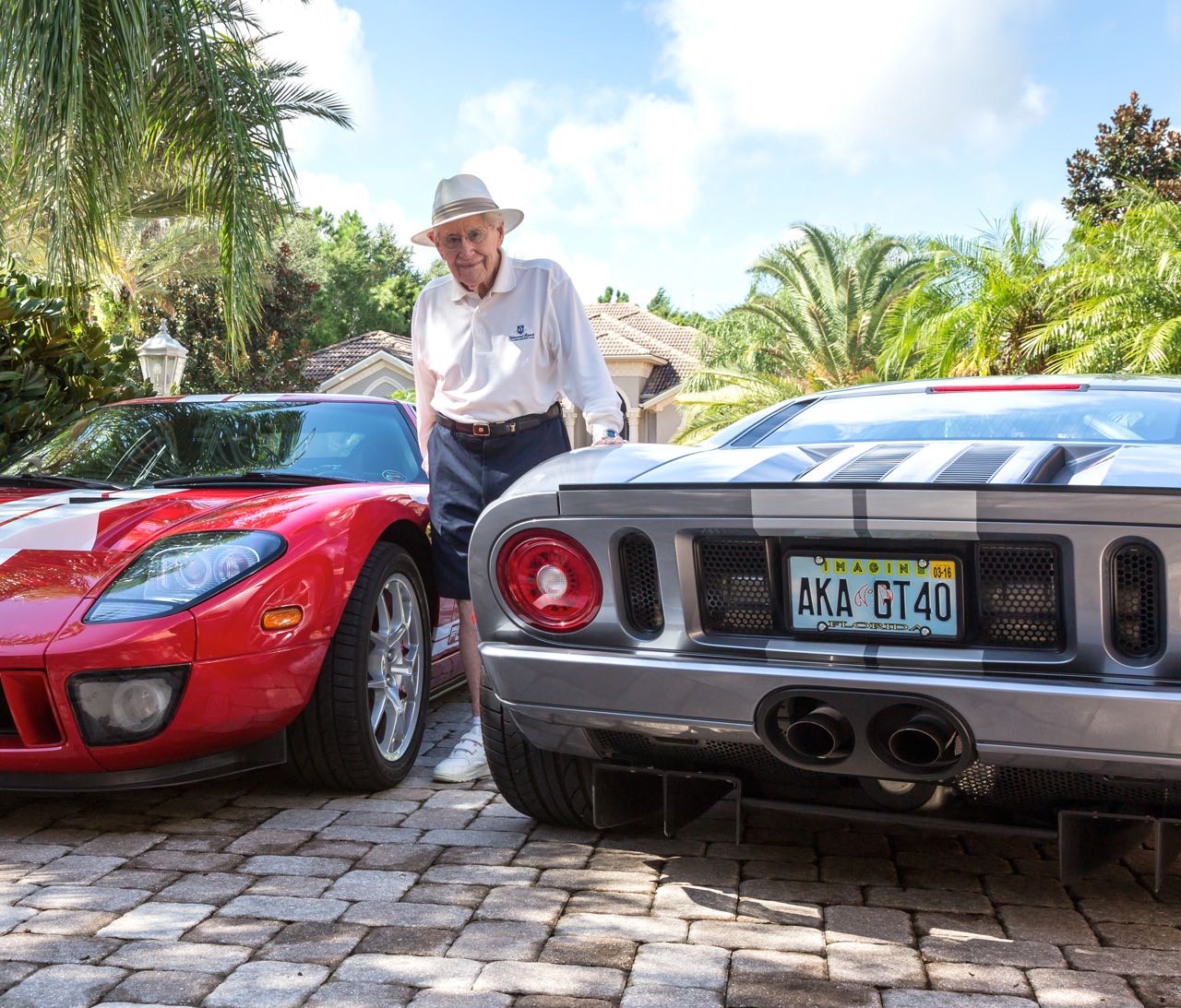In August 1966, Sports Car Graphic magazine featured two men on its cover. One was Zora Arkus-Duntov, famed father of the Chevrolet Corvette. The other was Roy Lunn, who at the time — and, actually, for time to come as well — was perhaps the Ford Motor Company’s best-kept secret, even if he was the chief engineer of one of the most historic racing cars of all-time, the Le Mans-winning Ford GT40.
Recently, while we were celebrating classic cars, those for the track and the road, on the Monterey Peninsula, word came that Roy Lunn had died. He was 92.
Lunn was a native of England, studied as an aeronautical engineer, and in 1946 joined AC Cars. He helped Aston Martin create the DB2s that raced at Le Mans, and was chief designer for Jowett Cars, taking a fiberglass-bodied Javelins to Le Mans and winning class honors.
He was hired by Ford and helped establish a Ford engineering center in England in 1953, and developed the Anglia, the first truly British Ford vehicle. Impressed, he was invited to the company’s Dearborn headquarters for a visit, a visit that lasted until 1971, when he left to help American Motors produce the Eagle, the first mass-produced American car with four-wheel drive, and then create the lightweight and versatile sport utility vehicle, the 1983 Jeep Cherokee.
At Ford, Lunn oversaw the Advanced Concepts Group and worked a diverse product portfolio — the company’s first front-wheel-drive product, the Taunus, for the European market; an aerodynamic and fuel-efficient over-the-road transport truck; even a potential competitor for the Volkswagen Beetle.

In June of 1963, he presented Ford executives a proposal for a racing car that could exceed 200 mph and would be capable of averaging 130 mph over the course of 24 hours. That proposal would produce the GT40.
By the way, a part of the Lunn’s plan was to produce not only racing cars, but a road-going high-performance sports car as well. Drawings were done and a clay model produced. Sure, some road-going Ford GT40s were built but, basically, they were street-legal racers, not the sleek and compact sports model Lunn had envisioned. The prototype for that vehicle was unveiled at the 1962 U.S. Grand Prix, where Dan Gurney drove it for a lap or two around the Watkins Glen racing circuit.
In the course of writing a book about the development of the GT40-inspired 2005 Ford GT, I talked and corresponded with Lunn at his Florida home. One of the things he emphasized in our letters back and forth was that his team had a name selected for the Ford sports car. They wanted to call it Mustang, after the famed fighter aircraft, and they were irate when Ford put that badge on a sporty but sedate Falcon-based four-seater.
After retiring in 1985, Lunn returned to his aerodynamic and fuel-efficient roots, produced several books about the unsustainability of a fossil-fueled world industrial economy, and worked on a three-wheeled electric vehicle project. In 2015, he moved to California, at age 90, started meeting weekly as a mentor to engineering students at the University of Santa Barbara.
“Roy Lunn is one of the industry’s original disrupters, the product of an enquiring mind and relentless ability to utilize it,” said Martyn Schorr, longtime automotive industry observer. “His goals throughout his career were visionary, with a clear eye to the future.”





